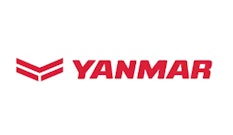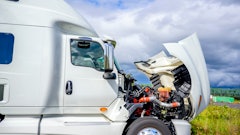SACRAMENTO -- December 17, 2010 -- The California Air Resources Board today took further steps to fight air pollution and protect public health by offering businesses a variety of options to comply with regulations to reduce soot from diesel engines.
"No other state, and no other nation has such an extensive set of rules to slash pollution from diesel engines. The diesel rules for vehicles cover almost everything that moves on or off the road, from trucks and buses to off-road construction equipment, and over the next 12 years they will prevent 3,900 premature deaths by removing thousands of tons of diesel soot from the air we breathe," said ARB Chairman Mary D. Nichols. "The changes we set in place today will continue those public health benefits while reducing the cost of compliance by more than 60%."
The amendments complement earlier emission control measures that aggressively target diesel pollution, which is associated with a host of health ailments including cancer. With the amended regulations in place, diesel particulate matter emissions will be reduced from today's levels by 50% by 2014 and 70% by 2020.
Over the past year, ARB staff held 20 public workshops throughout the state to solicit stakeholder input and discuss options for revising diesel control measures affecting commercially owned trucks, buses, port trucks, tractor trailers and off-road vehicles, including construction and large-spark ignition equipment (e.g, forklifts).
Statewide On-Road Truck and Bus Regulation:
Approved in December 2008, this regulation will clean up emissions from the nearly one million heavy duty diesel trucks that operate in California. The approved amendments ensure that the regulation will continue to do its job, helping the state meet its federal obligations under the Clean Air Act while also allowing businesses more flexible compliance options. Key amendments will:
* Reduce overall compliance costs by about 60% as California recovers from the recession;
* Exempt about 150,000 lighter trucks from having to retrofit with particulate filters;
* Delay initial compliance date for the retrofitting of heavier trucks and allow them to operate another eight years before being required to use a truck that meets 2010 emissions standards;
* Expand credits for fleet downsizing, adding cleaner vehicles ahead of any regulatory requirements, and for installation of early retrofits.
In addition, the Board voted to require all school buses greater than 14,000 lbs. GVWR to be retrofit with diesel filters by 2014. If no retrofit is available, the buses have until 2018 to be replaced by vehicles with a 2010 model year engine or emissions equivalent.
For more details on the Statewide Truck and Bus Regulation, see http://www.arb.ca.gov/dieseltruck
Off-Road Regulation:
First approved in July 2007, this pioneering regulation -- thefirst of its kind in the nation -- is aimed at reducing diesel emissions from the state's estimated 150,000 "off-road" vehicles used in construction, mining, airport ground support and other industries. The state's economic downturn, which began after this regulation was adopted, heavily impacted this sector, causing emissions to decline primarily due to fewer pieces of equipment in use, along with reduced activity of the remaining equipment. As amended, the regulation will:
* Delay implementation for all fleets by four years;
* Reduce costs by 97% in next 5 years;
* Expand or extend credits for businesses that comply before their deadline or have downsized;
* Ease annual requirements to clean up engines (e.g., small fleets can extend phase-out period for oldest equipment over 10 years, from 2019 to 2029).
For more details on the Off-Road Regulation, see http://www.arb.ca.gov/ordiesel
Port Truck Regulation:
Approved in December 2007, the port truck (or "drayage") regulation was adopted to modernize and clean up some of the oldest, dirtiest trucks in the fleet -- those that serve the state's busiest ports and rail yards. The regulation has already had an impact by banning pre-1994 trucks from these facilities and requiring diesel particulate filters on others earlier this year, enabling adjacent communities to breathe a little easier.
The new amendments will:
* Assure that all trucks serving the ports, including the smaller Class 7 trucks, will have diesel particulate filters by 2014;
* Expand the regulation to include trucks operating outside port or rail yard properties to prevent non-compliant trucks from receiving cargo from clean trucks in those areas.
For more details on the Port Truck Regulation, see http://www.arb.ca.gov/msprog/onroad/porttruck/porttruck.htm
Other amendments adopted today affect the Heavy Duty Diesel Greenhouse Gas Reduction Measure (http://www.arb.ca.gov/cc/hdghg/hdghg.htm) and the Large Spark Ignition Regulation (http://www.arb.ca.gov/msprog/offroad/orspark/orspark.htm).
California's diesel emissions control measures were adopted under the ARB's Diesel Risk Reduction Plan, which was approved by the Board in 2000, two years after diesel exhaust was declared a toxic air contaminant by the state's Scientific Review Panel. The ARB has already passed measures addressing urban buses, garbage trucks, school bus and truck idling, stationary engines, transport refrigeration units, cargo handling equipment at ports and rail yards, ship engines, harbor craft and fuel.
The Air Resources Board is a department of the California Environmental Protection Agency. ARB's mission is to promote and protect public health, welfare, and ecological resources through effective reduction of air pollutants while recognizing and considering effects on the economy. The ARB oversees all air pollution control efforts in California to attain and maintain health based air quality standards.
matter emissions will be reduced from today’s levels by 50% by 2014 and 70% by 2020.Over the past year, ARB staff held 20 public workshops throughout the state to solicit stakeholder input and discuss options for revising diesel control measures affecting commercially owned trucks, buses, port trucks, tractor trailers and off-road vehicles, including construction and large-spark ignition equipment (e.g, forklifts).
Statewide On-Road Truck and Bus Regulation:
Approved in December 2008, this regulation will clean up emissions from the nearly one million heavy duty diesel trucks that operate in California. The approved amendments ensure that the regulation will continue to do its job, helping the state meet its federal obligations under the Clean Air Act while also allowing businesses more flexible compliance options. Key amendments will:
* Reduce overall compliance costs by about 60% as California recovers from the recession;
* Exempt about 150,000 lighter trucks from having to retrofit with particulate filters;
* Delay initial compliance date for the retrofitting of heavier trucks and allow them to operate another eight years before being required to use a truck that meets 2010 emissions standards;
* Expand credits for fleet downsizing, adding cleaner vehicles ahead of any regulatory requirements, and for installation of early retrofits.
In addition, the Board voted to require all school buses greater than 14,000 lbs. GVWR to be retrofit with diesel filters by 2014. If no retrofit is available, the buses have until 2018 to be replaced by vehicles with a 2010 model year engine or emissions equivalent.
For more details on the Statewide Truck and Bus Regulation, see http://www.arb.ca.gov/dieseltruck
Off-Road Regulation:
First approved in July 2007, this pioneering regulation -- thefirst of its kind in the nation -- is aimed at reducing diesel emissions from the state's estimated 150,000 "off-road" vehicles used in construction, mining, airport ground support and other industries. The state’s economic downturn, which began after this regulation was adopted, heavily impacted this sector, causing emissions to decline primarily due to fewer pieces of equipment in use, along with reduced activity of the remaining equipment. As amended, the regulation will:
* Delay implementation for all fleets by four years;
* Reduce costs by 97% in next 5 years;
* Expand or extend credits for businesses that comply before their deadline or have downsized;
* Ease annual requirements to clean up engines (e.g., small fleets can extend phase-out period for oldest equipment over 10 years, from 2019 to 2029).
For more details on the Off-Road Regulation, see http://www.arb.ca.gov/ordiesel
Port Truck Regulation:
Approved in December 2007, the port truck (or “drayage”) regulation was adopted to modernize and clean up some of the oldest, dirtiest trucks in the fleet -- those that serve the state’s busiest ports and rail yards. The regulation has already had an impact by banning pre-1994 trucks from these facilities and requiring diesel particulate filters on others earlier this year, enabling adjacent communities to breathe a little easier.
The new amendments will:
* Assure that all trucks serving the ports, including the smaller Class 7 trucks, will have diesel particulate filters by 2014;
* Expand the regulation to include trucks operating outside port or rail yard properties to prevent non-compliant trucks from receiving cargo from clean trucks in those areas.
For more details on the Port Truck Regulation, see http://www.arb.ca.gov/msprog/onroad/porttruck/porttruck.htm
Other amendments adopted today affect the Heavy Duty Diesel Greenhouse Gas Reduction Measure (http://www.arb.ca.gov/cc/hdghg/hdghg.htm) and the Large Spark Ignition Regulation (http://www.arb.ca.gov/msprog/offroad/orspark/orspark.htm).
California’s diesel emissions control measures were adopted under the ARB’s Diesel Risk Reduction Plan, which was approved by the Board in 2000, two years after diesel exhaust was declared a toxic air contaminant by the state’s Scientific Review Panel. The ARB has already passed measures addressing urban buses, garbage trucks, school bus and truck idling, stationary engines, transport refrigeration units, cargo handling equipment at ports and rail yards, ship engines, harbor craft and fuel.
The Air Resources Board is a department of the California Environmental Protection Agency. ARB's mission is to promote and protect public health, welfare, and ecological resources through effective reduction of air pollutants while recognizing and considering effects on the economy. The ARB oversees all air pollution control efforts in California to attain and maintain health based air quality standards.




















